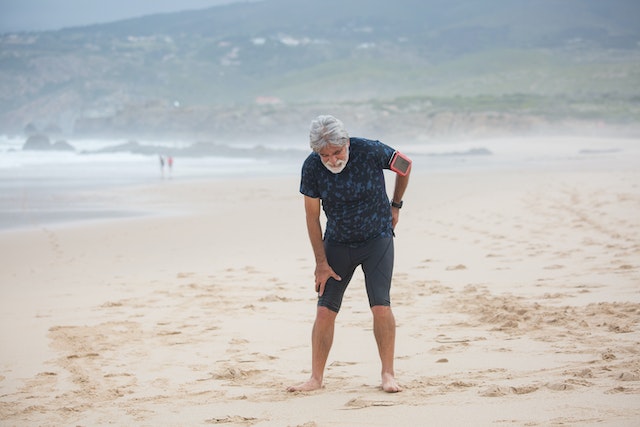- 12 June 2023
- 656
Why Athletes Seem to Handle Pain Better – And How You Can Benefit from Their Secret

Athletes often display an astonishing ability to endure pain and push through physical discomfort. Whether it’s running a marathon or tackling intense workouts, they seem to have a higher pain threshold compared to the average person. But what is their secret, and how can you tap into it to improve your own pain tolerance? Let’s delve into the factors that contribute to athletes’ ability to handle pain and explore how you can benefit from their methods.
1. Mindset and Mental Conditioning: One of the key factors that sets athletes apart is their mindset. They approach pain as a temporary and manageable sensation rather than an overwhelming obstacle. Athletes often undergo mental conditioning techniques that help them reframe pain as a sign of progress and growth. By adopting a positive mindset and viewing pain as a necessary part of the journey towards achieving their goals, athletes are able to better tolerate discomfort and push beyond their limits. You can apply this mindset by focusing on the benefits and rewards that come from pushing through pain, rather than solely focusing on the discomfort itself.
2. Gradual Exposure and Progressive Overload: Athletes understand the importance of gradually exposing their bodies to increasing levels of stress and discomfort. Through a method called progressive overload, they gradually increase the intensity, duration, or frequency of their training to challenge their bodies and adapt to higher levels of stress. This gradual exposure allows their pain threshold to naturally increase over time. By implementing progressive overload in your own training or physical activities, you can systematically expose your body to discomfort and build your pain tolerance gradually.
3. Physical Conditioning and Adaptation: Athletes undergo rigorous physical training that not only strengthens their muscles and cardiovascular system but also conditions their bodies to withstand higher levels of pain and discomfort. Regular exercise and physical conditioning can enhance your pain tolerance by improving blood circulation, reducing inflammation, and optimizing your body’s response to pain. Engaging in a consistent exercise routine, whether it’s strength training, endurance activities, or flexibility exercises, can contribute to building your pain threshold over time.
4. Focus and Distraction Techniques: Athletes often employ various focus and distraction techniques to redirect their attention away from pain during intense physical activities. By focusing on specific cues, such as their breathing, technique, or performance goals, athletes can shift their attention away from discomfort and channel their energy towards the task at hand. Practicing mindfulness or using mental imagery techniques can also help divert attention from pain and create a sense of mental calmness and resilience.
5. Social Support and Team Dynamics: Athletes often benefit from the support and camaraderie of their teammates and coaches. This social support system provides encouragement, motivation, and accountability, which can help athletes push through pain and discomfort. Surrounding yourself with a supportive community or workout partner can boost your own pain tolerance by fostering a sense of belonging, shared goals, and collective determination.
6. Pain Management Strategies: While athletes may handle pain better, it’s essential to remember that they also prioritize pain management and recovery. They utilize various strategies, including adequate rest, proper nutrition, stretching, and therapeutic modalities, to support their bodies in recovering from intense physical activities. Implementing effective pain management strategies, such as rest, ice, compression, and elevation (RICE), can help alleviate discomfort and prevent injuries, ultimately contributing to better pain tolerance in the long run.
It’s important to note that building pain tolerance should be approached with caution and within your own physical capabilities. Pushing through excessive pain or ignoring potential injuries can be detrimental to your health. Always listen to your body, seek professional guidance when necessary, and gradually progress your activities to avoid overexertion.
In conclusion, athletes’ ability to handle pain better is not simply a result of genetics or superhuman qualities. It stems
from a combination of mindset, physical conditioning, gradual exposure, and effective pain management strategies. By adopting these principles and incorporating them into your own life, you can gradually improve your pain tolerance and achieve new levels of physical and mental resilience. So, lace up your shoes, embrace discomfort, and unlock your potential to handle pain like an athlete.

